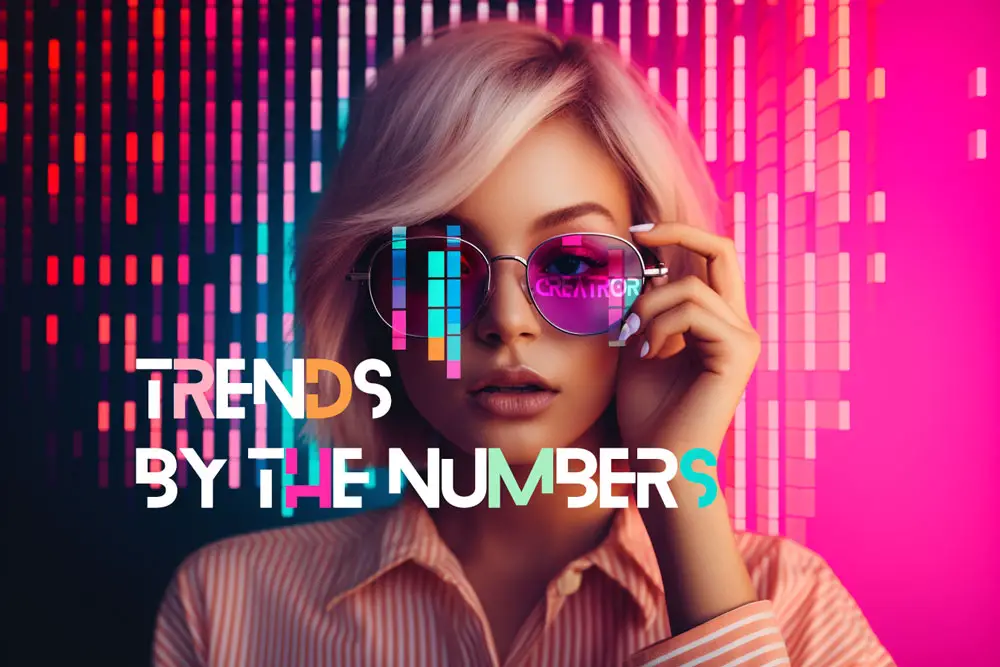
Understanding the Key Drivers of the Creator Economy

What are the key drivers of the creator economy?
One of the primary key drivers of the creator economy is the increasing popularity of social media platforms, which provide content creators with unprecedented access to global audiences.
These platforms have not only democratized content creation but have also introduced various monetization options, including ad revenue, brand partnerships, merchandise sales, and direct fan support through platforms like Patreon and OnlyFans.
The COVID-19 pandemic played a significant role in the creator economy’s expansion, as it led to a surge in creators and content consumption. With remote work becoming the new norm, many individuals sought opportunities to work from home and explore content creation as a career path.
The desire for financial independence and control over one’s destiny has driven more people to consider content creation as a viable profession.
Table of Contents
These drivers have been shaping and fueling the growth of the creator economy:
Digital Platforms:
The proliferation of digital platforms and social media networks has democratized content creation. Creators can easily reach global audiences through platforms like YouTube, TikTok, Instagram, and Twitch.
Monetization Opportunities:
There are various ways for creators to monetize their content, including ad revenue, brand partnerships, merchandise sales, and direct fan support through platforms like Patreon, OnlyFans, and Ko-fi.
Audience Engagement:
Strong fan engagement and loyalty are important in the creator economy. Creators build communities around their content, often interacting directly with their followers through live streams, comments, and social media.
Niche Content:
Creators can cater to specific niches and audiences that were underserved by traditional media. This specialization allows for deep connections with fans who share specific interests.
Low Barrier to Entry:
The accessibility of affordable technology and software tools has lowered the barriers to entry for content creation. Anyone with a smartphone and an internet connection can become a creator.
Remote Work Trends:
The COVID-19 pandemic accelerated remote work and online engagement, making digital content creation more appealing as a career choice and leisure activity.
User-Generated Content:
Brands increasingly tap into user-generated content created by fans and influencers to market their products and services, driving collaboration opportunities and income for creators.
Decentralization and Blockchain:
Blockchain technology is being used to create decentralized platforms that allow creators to have more control over their content and revenue, as well as explore new monetization models like NFTs (Non-Fungible Tokens).
Skills and Education:
The demand for educational content and tools to help aspiring creators improve their skills has grown. Courses, workshops, and mentorship opportunities are thriving.
Creative Freedom:
Creators have the freedom to express themselves authentically, often in ways that might not have been possible in traditional media. This authenticity can be a strong draw for audiences.
Collaboration:
Creators often collaborate with each other, amplifying their reach and creating cross-promotional opportunities.
Diverse Content Formats:
The creator economy encompasses a wide range of content formats, from videos and podcasts to written articles, music, art, and more, allowing for diverse forms of creativity.
Data and Analytics:
Creators have access to data and analytics that help them understand their audience better, refine their content strategy, and make data-driven decisions.
Regulation and Legal Issues:
As the creator economy grows, there are evolving legal and regulatory issues related to copyright, privacy, and intellectual property that need to be addressed.
Cultural Shifts:
There is a cultural shift towards valuing and supporting independent creators, which has led to more mainstream recognition and acceptance of the creator profession.
Summary
In Summary, the creator economy is a force that is continuously shaped by various factors and trends. It’s difficult to envision this burgeoning industry fading away, given the immense value creators bring to brands. The financial impact influencers have on companies is staggering, with creator-driven marketing campaigns often delivering a higher return on investment than traditional ads.
However, the current platform landscape does pose challenges for newcomers looking to establish careers as influencers. Growing one’s presence as a new user has become increasingly complex which doesn’t bold well for Gen Z, as platforms have matured and competition has intensified. Viral success, while attainable, can be elusive and can have adverse effects on individuals’ mental health.
The future of the creator economy may lie in the emergence of new platforms with decentralized aspects, which could rejuvenate the industry. Such platforms could offer users the freedom to create content at their own pace and find their unique niche without the pressure of immediate virality. This decentralized approach aligns with the broader concept of Web 3, emphasizing user empowerment and ownership.
It’s important to note that the creator economy extends beyond just social media, encompassing a wide range of digital industries. However, social media remains a driving force, as it enables creators to connect with vast audiences and build their brands.
Conclusion
The creator economy is a thriving ecosystem with a promising future. While challenges persist, the industry holds immense potential for growth and innovation. As creators and platforms continue to adapt to shifting dynamics, they are poised to be instrumental in shaping the trajectory of digital content creation and consumption.
Looking forward, the advent of SocialFi, within the context of Web 3, promises to be a game-changer for the next generation of content creators. This decentralized and blockchain-powered platform aims to revolutionize how creators get paid, offering quicker and more direct income streams while giving creators unprecedented control over their content. SocialFi represents an exciting moment of evolution in how we’re paid, designed to empower creators and maximize their earnings in the Web 3 space.

Uncover the explosive growth and vast opportunities for millions of people in the creator economy. Dive into the numbers, trends, and future projections.






Leave a Reply